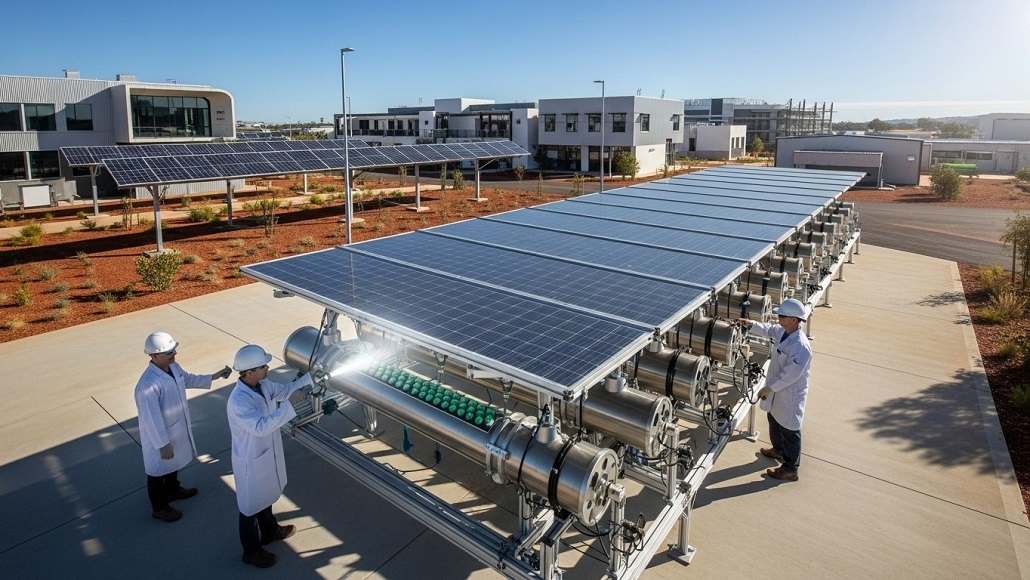Sparc Hydrogen has opened a revolutionary green hydrogen pilot plant at the University of Adelaide’s Roseworthy campus. This is a big step forward for clean energy innovation. The Sparc Hydrogen Aurora Renewable Pilot (SHARP) is a facility that uses a proprietary technology called Photocatalytic Water Splitting (PWS) to make hydrogen in a way that has never been done before. PWS turns sunlight and water directly into hydrogen without utilising power or electrolysis.
The SHARP project is different from other green hydrogen systems since it doesn’t need a lot of renewable electricity or expensive electrolysers. Instead, it uses simply sunlight and specialised photocatalyst materials to break water into hydrogen and oxygen. The main part of the system is a custom-designed linear Fresnel solar field made in Europe. It focuses solar energy on reactors that are lined with next-generation catalysts made by Professor Greg Metha and his team.
This direct solar method is projected to greatly cut production costs and improve energy efficiency because renewable power makes up as much as 70% of the cost of making hydrogen the old-fashioned way. By July 2025, the system should be completely operational.
A Quick Response After the Setback in Whyalla
The SHARP launch is very important for Australia’s plans to use hydrogen. Earlier this year, South Australia cancelled the $600 million Whyalla hydrogen hub because costs were rising and there were problems with the supply chain. On the other hand, SHARP sees itself as a lean, innovative option that can help restore faith in the industry.
A Group Working Together for SHARP
The pilot is run by a joint venture called Sparc Hydrogen Pty Ltd, which brings together Sparc Technologies Ltd, a leader in advanced materials and graphene-based solutions in the cleantech field; Fortescue Ltd, a big mining company that is getting into renewable energy under Dr. Andrew “Twiggy” Forrest;
The University of Adelaide, where the basic research that led to PWS technology began.
This group of public, private, and academic partners brings together technical know-how, money, and top-notch research—all of which are necessary for success in developing green hydrogen.
Why Photocatalytic Water Splitting Should Be Used
Photocatalytic Water Splitting could change the way we get hydrogen by giving us a modular, off-grid option to grid-tied electrolysis equipment. Some of the main benefits are that it cuts expenses by getting rid of the need for grid electricity;
- Less complicated logistical and infrastructural needs;
- Possible use in isolated areas or close to ports for export;
- Compact design that makes it easy to add or remove parts.
- Interest around the world and what the future holds
The SHARP project is already getting attention throughout the world. Researchers from Japan’s Shinshu University came to see it. Australia is ready to take the lead in the global green hydrogen race now that it has won patents this year. Roseworthy is a great place to scale this new technology because South Australia has a lot of solar resources.
Difficulties Ahead, But a Bold Vision
The SHARP project has reached some of its first goals, but there are still problems to solve, such as how well the system works, how long the catalyst lasts, and how weather affects output. The possible benefits are still very substantial. If it works, SHARP might change the way green hydrogen is made and set a global standard for photocatalytic innovation.
As the world’s energy business looks for cheap, scalable ways to make green hydrogen, SHARP offers an interesting new story: use sunlight to make hydrogen. It’s a simple idea with huge promise.

